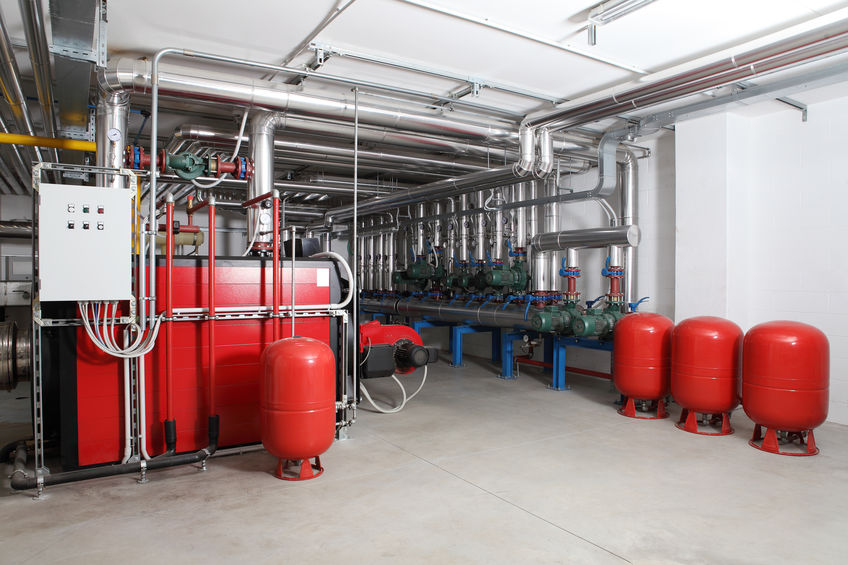The Importance of Medical Compressed Air During the Pandemic
Medical compressed air has always played an important role in hospitals, intensive care units and emergency rooms where respiratory air is supplied to patients via machine ventilation and other equipment; however, the worldwide health crisis of COVID-19 intensified the need for high-quality, high-purity medical compressed air that was clean and free of humidity, oil, dust and pathogens. Fortunately, hospitals and other healthcare facilities treating COVID-19 patients realized that reliable medical compressed air equipment, support and service were essential during the pandemic and will continue to be so going forward and have reacted accordingly.
Medical Compressed Air Use During COVID-19
In ordinary circumstances, healthcare applications that use medical compressed air supplied by high-quality oil-free or oil-less air compressors, include:

- Production of medicine, medical devices and other equipment.
- Medical-grade air for ventilators, other respiratory machines and surgical procedures.
- Air filtration and decontamination.
- Disinfection of facilities.
- Gas sources for laboratory test equipment.
However, during the pandemic, there was an increased need for medical compressed air as hospitals, emergency rooms and intensive care units needed to supply clean and dried compressed air to an unprecedented number of patients who relied on respiratory assistance to survive serious COVID-19 infections. Ventilation devices were used to provide complete control over severe COVID-19 patient respiration and continuous positive airway pressure (CPAP) machines were used to increase lung function and improve oxygenation of less critical COVID-19 patients.
The worldwide pandemic not only intensified the need for medical compressed air, but also demonstrated how crucial it is for patient survival as any breakdown of its availability can negatively impact patient care – and survival. During the peak of COVID-19, it became clear that there is no allowance for failure of the equipment that supplies life-saving treatments, including medical air compressors, and the pandemic revealed that many healthcare facilities indeed faced limitations on compressed air capacity that may not have previously been known.
The Impact of COVID-19 Going Forward
While large healthcare facilities typically have a main-duty medical air compressor in place, along with a backup system for emergency situations or outages, many smaller facilities do not. At the same time, the pandemic led to situations where even large facilities were neglecting routine maintenance of their compressed air systems due to a lack of workers, available maintenance technicians and other unprecedented situations.
Once these shortcomings – and the potentially devastating consequences – were noted, many healthcare facilities began to upgrade their medical compressed air systems, including installing standby systems, replacing older or faulty parts with new ones and improving their overall medical air compressor maintenance routine to ensure that shortages would not impact patient care during the pandemic or any time after. Further, many of the related projects that had been postponed prior to the pandemic were given priority so that healthcare facilities were prepared for additional COVID-19 outbreaks or future pandemics.
Best Practices for Medical Air Compressors
Also as a result of the pandemic, many facilities prioritized following best practices for medical air compressor upgrades, maintenance and upkeep. Including ensuring the safety and purity of the produced air by putting a premium on service routines performed by in-house staff where possible or through partnerships with service providers where in-house maintenance staff are not available or qualified.
When it comes to upgrading compressed air equipment for medical purposes, it’s important to note that medical compressors must be National Fire Protection Associate (NFPA) compliant. Under NFPA, there are three classifications for hospital compressors and vacuum systems: medical air, instrument air and medical vacuum. Installed systems must be able to pass requirements for these three classifications. Medical air compressors used for direct patient care must have built-in redundancy so that if any critical parts of the system fail, a backup system will be triggered automatically. Additionally, an alarm system must send an alert if there is a failure that has caused the backup system to activate.
Also of note is that medical air compressors must be able to distribute pure and uncontaminated supplies of air, which means medical facilities typically use oil-free or oil-less air compressors, which are divided into different categories, depending on their use. Categories 1 and 2 are the most relevant to patient care. Category 1 air compressors include those that power ventilators and respiratory machines so they must function 100% of the time and have standby options. Category 2 air compressors may also be used for patient care that is not life dependent so are permitted minor downtime. Categories 3 and 4 do not directly impact patient care and are likely to be used to power tools used for patient care or other similar applications.

Oil-free technologies widely used in the medical field include oil-free screw compressors and oil-less scroll compressors. Oil-free screw compressors offer completely oil-free usage, so the risk of contaminated air is practically zero, allowing use in hospital patient care settings as well as medical device manufacturing. Similarly, oil-less scroll compressors are also contamination free and can be used in patient care; however, they are smaller in size and quieter so are often employed in smaller healthcare clinics and facilities. While oil-less reciprocating compressors are also contaminant free, they allow for intermittent cycles, so are considered Category 3 compressors, meaning they may be used in healthcare facilities, but not for direct patient care.
For more information on JHFOSTER’s medical compressed air equipment and services, click here.
